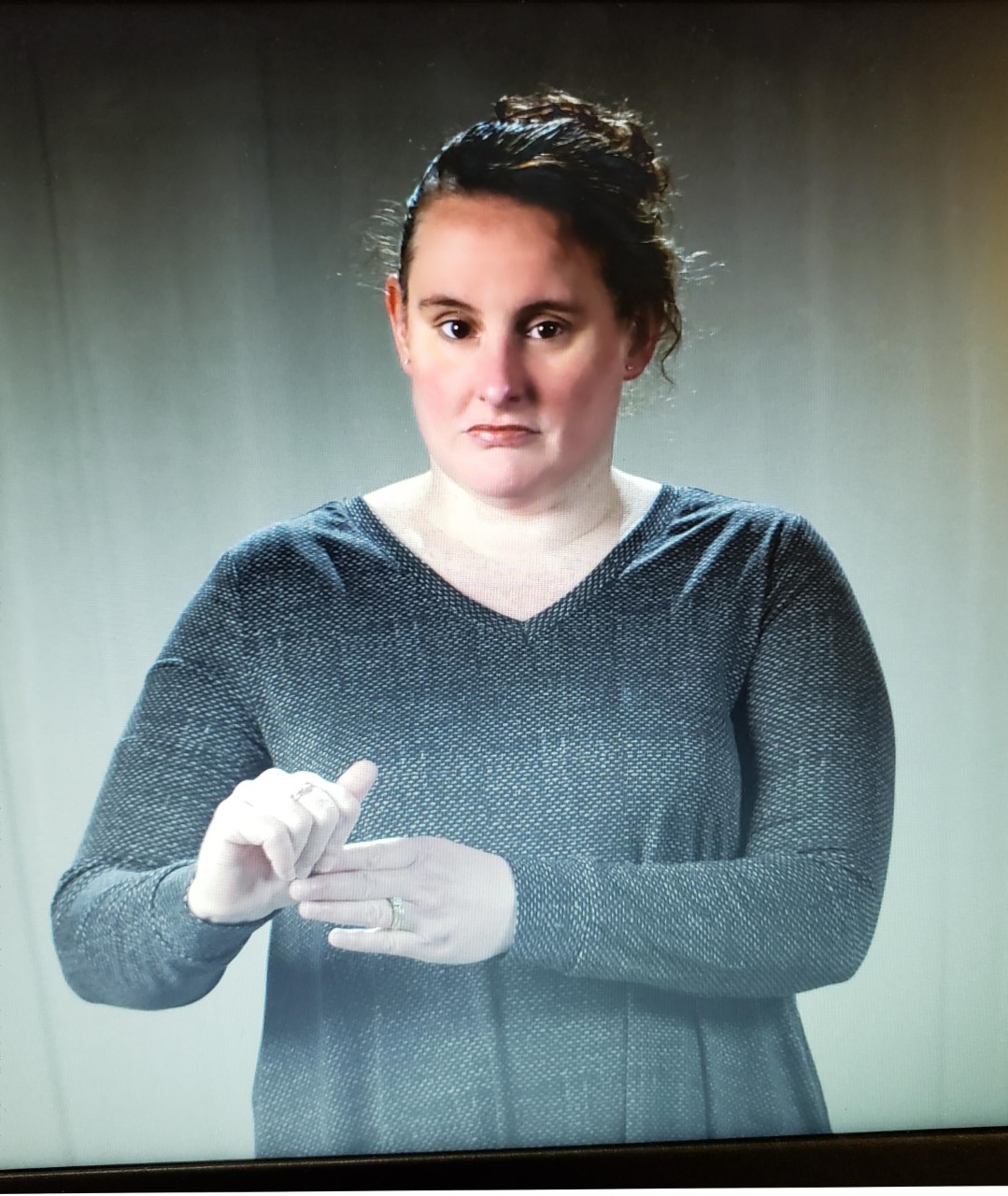Not everyone with hearing loss necessarily operates in the same fashion.
“There are many ways to be deaf,” said Crockford, a lecturer in Buffalo State College’s Speech-Language Pathology (SLP) Department who has lived with profound hearing loss her entire life.
The coordinator of Buffalo State’s ASL program, Crockford will soon have the opportunity to introduce students to the intricacies of deaf and hard-of-hearing life through a new elective, SLP 330: Deaf Culture in America. The college recently approved the course that will be offered every other spring beginning in 2022.
The course will cover the history of deaf culture, provide an overview of ASL and other sign language systems in America, and impart nuanced lessons such as which behaviors are and are not acceptable when interacting with individuals with hearing loss.
“I want students to discover how everyday environments are different for deaf and hard-of-hearing people,” Crockford said, “and also understand differences within the deaf community.”
The course developed out of a special topics course that Crockford taught last spring. About 10 students participated, and it was well-received.
“Ms. Crockford is particularly well suited to teach this class,” said Susan Felsenfeld, associate professor and chair of the SLP Department. “She bridges both the hearing and deaf worlds better than any person I have encountered.”
Deaf Culture in America will also serve as the cornerstone for a micro-credential in ASL that the SLP faculty is developing in collaboration with the Exceptional Education Department.
Micro-credentials typically range between 6 and 15 credit hours. They provide additional hours on students’ transcripts and give them a specialization that can make them more attractive to an employer.
“We are very close to having the one in ASL approved,” said Kathy Doody, associate professor of exceptional education and coordinator of the graduate early childhood special education program. “Students can apply courses they’ve already taken that are included within the micro-credential.”
A new class within Exceptional Education—Sign Language for Students with Disabilities—would be included within the micro-credential, as well as four SLP courses.
Although it’s a 300-level undergraduate course, Deaf Culture in America will be open to all students—graduate and undergraduate—regardless of major.
Crockford hopes that students from a range of academic disciplines will enroll.
“It will provide students with a greater understanding of the deaf community that is prominent in Western New York,” she said, adding that neighboring Rochester is home to the largest deaf population in America.
“Students who go into business, for example, could have a future client who is deaf,” she said. “Knowing basic ASL will definitely be a selling point for myriad careers. Also, knowing more about the culture and how to interact with deaf or hard-of-hearing people will make students more comfortable in a variety of encounters they may have in the future.”
“ASL can also be used effectively with students who aren’t deaf or hard of hearing but have other disabilities, such as autism,” Crockford said. “There is definitely an untapped potential for what SLP and Exceptional Education can provide for our students going forward.”


